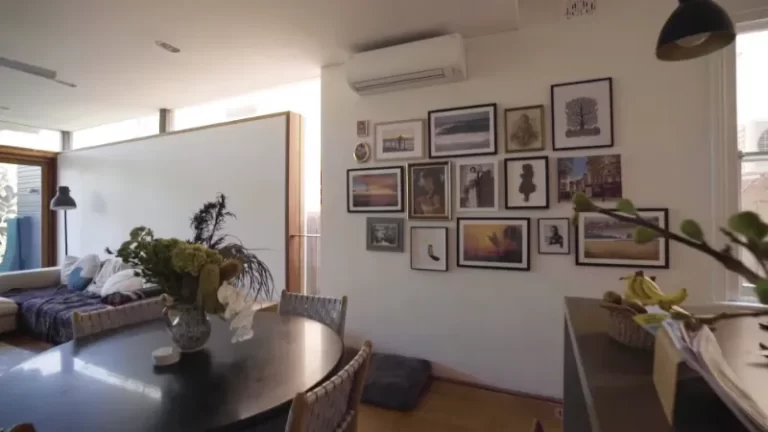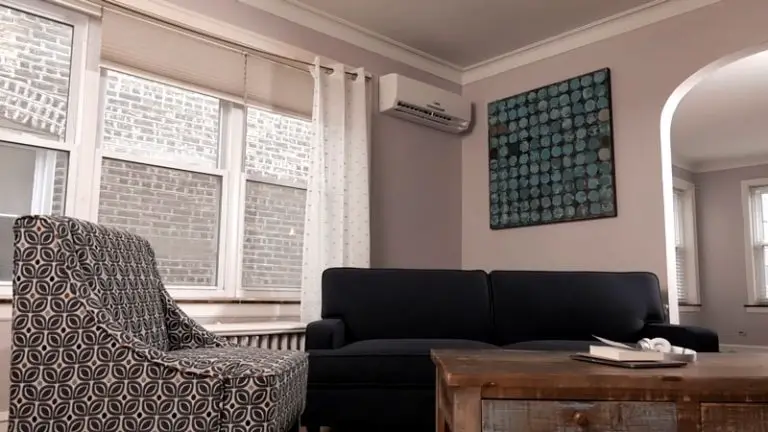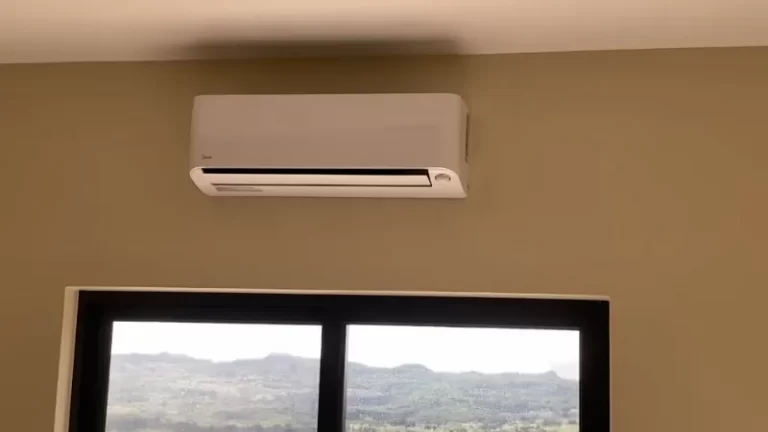Thermostat Green Wire Not Connected – What to Do?

Thermostats are essential devices when it comes to regulating your home’s temperature. It allows you to set the desired temperature according to your preference.
It also helps in saving energy costs by avoiding excessive heating or cooling of the house.
However, sometimes homeowners face issues with their thermostats, such as green wire not being connected.
You'll Learn About
What is the Green Wire?
Thermostats are an essential component of every HVAC system as they play a crucial role in controlling the temperature of your home or office environment. The green wire is one of several wires present in thermostats and plays a specific function.

The function of Green Wire in Thermostats
The green wire, also known as the G wire, controls your fan for your air handler or furnace’s blower motor when coupled with other wires like Y and W terminals at the thermostat terminal block.
When you use the thermostat’s cooling mode to lower room temperatures during hot weather, power flows through this circuit. It activates relays within the AC unit to turn on condensers outdoors before transferring chilled water back inside via pipes.
Its primary purpose is to diffuse into ducts across all rooms until optimal comfort levels are achieved. Similarly, when in heating mode, increasing the heat causes current to flow across these same circuits.
This instead powers heaters, allowing warm air to be blasted out through vents by blowers. As a result, the indoor climate is eventually raised to the ideal set point.
Connecting Green Wire to HVAC System
First, determine where the Green labeled ‘G’ Terminal connects, which is normally discovered beneath the cover plate after detaching it with a screwdriver. If you are unsure about any connections, do not proceed without consulting the handbook.
Once located, cut the power supply and take preventative precautions. Rubber gloves, insulated handles, safety clothing, and so on. Wiring ends were stripped bare before carefully inserting individual leads into their corresponding jacks.
You should do it according to the polarity marks mentioned, and then re-test performance evaluations. As a result, to ensure fault-free operations, always follow manufacturer guidelines.
A correctly connected green wire allows thermostats and HVAC systems to function effectively. It paves the way for improved temperature control between seasons while preserving energy efficiency and conserving expenses over time, assisting in achieving the best results given.
When carefully designed identified problems are correctly merged, they are resolved. It ensures that sound maintenance methods are followed on a regular basis by experienced experts who only do routine checks.
By thoroughly inspecting parts and addressing errors detected along the way during operations.
Troubleshooting the Green Wire
Signs That the Green Wire is Not Connected
You notice that your furnace or air handler fan is not turning on. Even when it should be, this could signal a problem with your thermostat’s green wire connection.
It is one of the most critical issues. Another indication of a problem with the green wire is if your system’s blower motor does not switch off after you’ve set the temperature to a comfortable level.
Benefits of Connecting the Green Wire
The principal advantage of connecting your thermostat’s G terminal (which delivers signals via its related green wire) to your HVAC heating system is efficiency and control over how much cold/warm air circulates throughout your home/office building.
Possible Problems Caused by a Disconnected Green Wire
When a piece of electrical equipment, such as an HVAC unit, does not receive adequate power owing to loose/disconnected connections, etc. Operational interruptions are unavoidable, especially as related airflow patterns change as needed.
It is based on inside/outside temperature differential and user choices. Eventually, monthly energy costs and peak hour needs are added.
It can also be caused by faulty coolants, resulting in higher costs. Then you require repair technicians to come to our homes/offices, which is inconvenient.
To avoid these problems, discover any ‘wire’ complications early on to keep all normal procedures under control and running smoothly. The most easy way would be to trace down easily locatable characteristics signaling failed connections.
After assessing, when possible, contact industry professionals for assistance or repair. Please refer them ahead of time to ensure top-quality repairs and maximum cost-effectiveness.
Green Wire Connection
The green wire in thermostats controls the fan for air handlers or furnaces. It’s essential to connect this wire properly for proper functioning of your heating system.
There are various methods of connecting a green wire and precautions one should take before doing it.
Methods to Connect Green Wires
To begin, locate the G terminal on your thermostat, which is normally situated at its base station.
Once found, see whether there is an existing termination point available that was previously placed by a specialist that complements its operating nature.
It is done with a 24 volt power supply to avoid adding unnecessary complexity.
It varies by model whether the green wires are linked directly to your furnace board relay or to a separate relay.
Even after being triggered based on sequence via other wiring pathways.
Any recent high-end versions may have specific slots/ports made available; in such circumstances, it comes down to personal preference; nonetheless, always begin with safety in mind, turning off all electricity while performing said activity.
Check Power Supply Before Connecting
Before connecting, double-check that the power on/off switches are turned off and that you have checked your schematic diagrams and the YouTube videos given by the support service community.
You can investigate these questions. Accidental shock hazards might create unintended loss as a result of the following harm. Electrical interference may potentially cause sensitive electronic components to fail.
Do-it-yourself Versus Calling a Professional
Though yellow-green cable is known as “thermostat cabling,” don’t be fooled by its appearance as a special identifying tag regarding connections. Some portable air conditioners employ a similar color scheme with caution.
As a result of understanding enough to perform one’s own work and enjoy hobbyist arts, one is obliged to spend more money paying professional services to do the same activity.
It makes sense to just engage an electrician who is an experienced HVAC specialist who is familiar with various materials and applications. It necessitates each specific scenario, ensuring that everything functions better than planned safely and without incident.
Situations such as when an inappropriate installation occurs, resulting in defective functionality.
Importance of Maintaining Hvac Systems
Maintaining Hvac Systems for Optimal Performance
HVAC (Heating, Ventilating, and Air Conditioning) system plays a crucial role in maintaining the indoor air quality and comfort level at your home or office. It is essential to keep these systems well-maintained to ensure they function efficiently throughout their operational life.
Regular maintenance can help prevent unexpected breakdowns that require costly repairs and replacements. Moreover, by keeping the equipment clean and free from debris buildup or blockages such as dust accumulation within ductworks or filters clogging over time ensures optimized efficiency which minimizes energy consumption while maximizing thermal output.
Importance of Regular Thermostat Inspections
The thermostat is an essential component of any heating/cooling system since it controls how much conditioned air enters your living rooms. This is based on the temperature reading inside the room in relation to the outside weather conditions.
As a result, regardless of whether it is hot in the summer or chilly in the winter, a comfortable indoor climate is maintained all year. However, just like other components in an HVAC system, they are frequently impacted by continual use influxes, humidity evaporation, and so on.
The thermostats may also encounter problems ranging from defective wiring to electrical elements that require replacement calibration checks. It has an impact on the accuracy of malfunctioning in detecting changes in temperature around them.
As a result, frequent inspection/calibration to ensure appropriate operation is required on a regular basis. Because little flaws, if overlooked, can lead to larger and more difficult difficulties to rectify.
This costs more than the original expense of identifying preventative measures and resolving relevant defectivity on time.
Benefits of a Well-maintained Thermostat
Well-maintained thermostats can improve how well your home’s heating, ventilation, and air conditioning (HVAC) system works. Having up-to-date versions and newer models with linked smart gadgets that are simply configured via mobile applications.
Automatic scheduling settings of various types boost user comfort by decreasing the need for continual human adjustment. It’s more about giving control and monitoring remotely before arriving nicely warmed/cooled between zones.
The rooms save money and reduce environmental impact by not having higher utility bills.
Furthermore, with correct set-point temperatures, operating ranges within specified comfort levels, and defined intervals, a healthier breathing environment is advanced.
The allergies/other respiratory disorders caused by the presence of dust/mould/humidity are most suited for efficient HVAC equipment. It ensures energy efficiency by gradually reducing the influence known as start-up loads on system components costs.
Maintaining a well-maintained thermostat on a regular basis is thus critical to reaping the full benefits of your heating and cooling systems. While keeping utility expenses as low as possible, particularly in today’s ever-changing dynamic climate change scenarios that affect not only local but global communities worldwide.
What is the Green Wire for on Thermostat?
The green wire on a thermostat is for connecting the fan of your furnace or air handler. This wire plays an important role in setting up and controlling the HVAC system.
Role of Green Wire
The main function of the green wire is to connect your thermostat to the air handler or furnace’s fan circuit. It assists with proper ventilation throughout your home, ensuring that heat or cool airflow reaches every room evenly.
Connection Process
When installing a new thermostat, make sure you correctly attach each colored wire to its respective terminal screw for reliable heating/cooling service from all units connected through it.
Troubleshooting Guide
If there’s any problem with airflow circulation like uneven distribution – this could be due to a disconnected/wrongly attached green-colored cable coming out of either side (thermostat-side/furnace-or-air-handler location).
Importance
Installing and comprehending fundamental wiring sequences, like which color symbolizes which function, enables homeowners to troubleshoot on their own. When something goes wrong, prepare yourself before contacting expert technicians.
They specialize in repairs and service visits to keep their equipment running at optimal performance levels for the future winter and summer seasons.
Does the Green Wire Need to Be Connected?
Importance of Connecting the Green Wire
Connecting the green wire (ground) to a bare wire in the box is crucial for safety and preventing electrical shocks.
When to Connect the Green Wire
The green wire should always be connected when installing any electrical device or appliance that has it, such as outlets or light fixtures.
What if There’s No Bare “ground” Wire?
If your electrical box does not have a bare “ground” wire, you can simply put a wire nut on the end of the exposed Green Wire to ensure its isolation from other wires.
The Consequences of Not Connecting the Ground
Failure to connect an electronic device’s grounding conductor could result in electrocution risk due fault current flowing through anyone touching metal parts which aren’t designed with good insulation.
Professional Installation
To be safe when wiring anything into this blank area It is recommended to hire experienced electricians who follow local building codes for electrical wiring installations. Faults can lead also to 52 errors.
Is the Green Wire Important?
Function of the Green Wire
The green wire is used as a grounding conductor in electrical systems to prevent electric shock.
Safety Measures
Without ground wires, metal surfaces can become energized and pose a dangerous shock hazard if touched.
Protection Against Short Circuits
Grounding prevents short circuits because unwanted current travels easily through this pathway preventing damage to equipment or injury to people.
Legal Obligation
National Electrical Code requires all residential buildings with AC power supply must include these grounds wiring measures.
Color Coding Standardization
Green color coding helps an easy identification for workers during installation, maintenance & troubleshooting purpose making it mandatory by code standards
To Recap
In conclusion, if you find that your thermostat isn’t working correctly and notice that the green wire is not connected properly or missing altogether; then connecting it should be a simple fix.
Knowing what this particular wire controls can help troubleshoot any related problems effectively.
In case of difficulties with electrical connections or understanding mechanisms of an HVAC system seek professional assistance rather than taking risks yourself.



